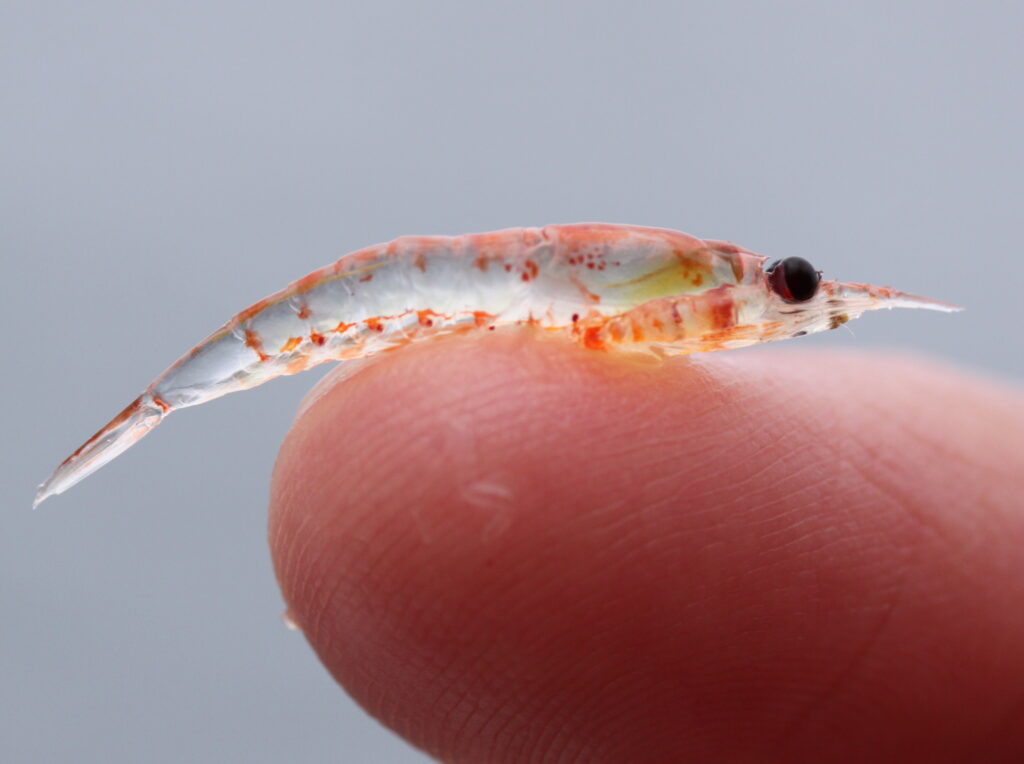Penguins always come to supper with their finery on. It hardly matters that their dinner rarely varies. Pygoscelis penguin, a genus that covers three distinct species of penguin, also called brush-tailed penguins, are much smaller than the famous emperor penguin. They live in the southernmost places on Earth, with some colonies living as far north as the Falkland Islands, a small collection of islands just off the southern tip of South America. These penguins eat primarily krill during the austral summer, which falls between November and March. This is why researchers at Stony Brook University have been using computational models run on the ACCESS resource Ookami to study the relationship between krill migration and Pygoscelis penguins.

Krill are tiny sea creatures with a dynamic population, their numbers and location changing dramatically between years and seasons. They have cycles of abundance that occur every four to six years in the West Antarctic Peninsula (WAP) region. Similar to how you might notice more cicadas during certain years, krill populations can explode due to a number of factors. If all a penguin ate was krill, you can imagine these types of fluctuations might affect where they travel or how successful they are in raising their young. Where the krill go, in theory, the penguins follow.
Creating a computational model of krill populations and movement is tricky work. Krill exist within a delicate system balanced by cyclical changes in ice dynamics. In addition, krill fishing can impact this system as well.
Researchers have been studying penguins in the West Antarctic Peninsula (WAP) and have noted a trend in penguin populations around an area called the Adélie Gap. In particular, they have observed that penguin populations are growing or stable north of the Gap while they struggle elsewhere. Katherine Gallagher, a biological oceanographer, NSF Office of Polar Programs Postdoctoral Research Fellow and the PI of this NSF-funded project, is part of a team researching these penguin populations. Gallagher’s team has hypothesized that krill connectivity plays an important role in Pygoscelis penguin population dynamics north and south of the Adélie Gap. They recently published a paper in Scientific Reports about their research.

“While the metrics that we calculated on large spatial scales weren’t statistically related to penguin population dynamics, we did find some interesting trends that support hypotheses that prey, in this case, krill, may become limiting for penguins and other predators around the Adélie Gap,” explained Gallagher. “This means that between the dynamic krill populations, predator demands, and the growing krill fishery that there might not be enough krill to go around. We’re hoping that this new paper will help inform some future management decisions to help protect the krill and their predators.”
Studying the migration of actual krill would be difficult work. You can’t tag individual krill, and because their life cycle takes them to hard-to-reach places, observing populations migrate would be like trying to track and follow individual specks of dust flying around in the air. But computational modeling can fill in those gaps by simulating krill populations. To create the model, Gallagher’s team used observational data on a krill behavior called diel vertical migration and used it to model krill in the Regional Ocean Modeling System (ROMS). This vertical migration behavior helps krill avoid visual predators like penguins during the day. ROMS was developed by researchers at Rutgers University and University of California Los Angeles. It’s a highly complex model researchers use to test how things like how temperature or weather affect a specific area of the ocean.
This was my first experience running physical ocean models such as ROMS by myself, instead of relying on others to do the model runs for me, so I am incredibly thankful to the Ookami team for their support during this learning process and for their help optimizing ROMS for the Ookami operating system. Thanks to their help, we were able to get to a point where we are able to simulate nearly 200,000 krill in the coastal ocean over a five-month period, in less than two days.
Katherine Gallagher, NSF Office of Polar Programs Postdoctoral Research Program (PRFP) Fellow, Stony Brook University
The more complex the variables entered into a model like this, the longer simulations take to run. Supercomputers can reduce simulation time by factors of a hundred or more if the model is tuned correctly. For their results, Gallagher’s team relied on the power of Ookami. With the help of data analysts assigned to the project, the code was made efficient for running on Ookami, speeding up the time it took to run simulations.
“We worked with Dr. Gallagher and her team on porting and tuning their application to the cutting-edge architecture of Ookami (Fujitsu A64FX),” said Eva Siegmann, lead research scientist for Ookami. “Porting software to a new system can be a challenging task. Our support team is happy to help and share their expertise. ROMS now runs seamlessly on Ookami, its performance is very good and its power consumption is exceptional (using two to three times less power than on a standard x86 system).”
If you have a project that could benefit from access to supercomputing resources like the ones used in this story, you can visit the allocations page to get started with ACCESS. You can read more about this story here: Penguins and Their Diets
Project Details
Institution: IACS (Institute for Advanced Computational Science)
Affiliations: Stony Brook University
Funding Agency: NSF
Grant or Allocation Number: EES220028
The science story featured here was enabled by the ACCESS program, which is supported by National Science Foundation grants #2138259, #2138286, #2138307, #2137603, and #2138296.


